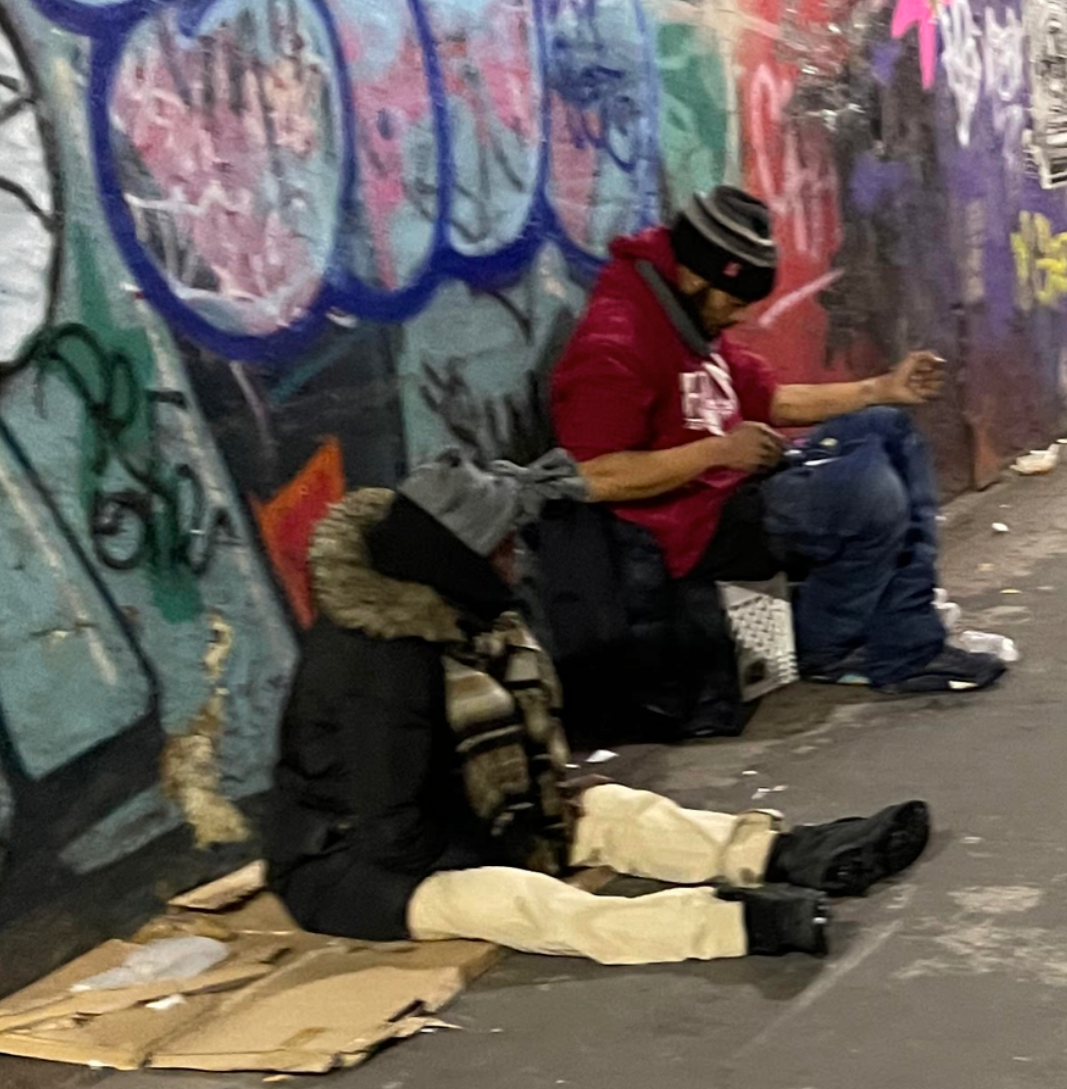Homelessness: Solutions!

Picture: men in a Subway tunnel shooting up on heroin. What is Congressman Nadler’s position on this? Policies?
An estimated 350,000 people in New York (now including recent illegal migrants) are homeless. Basic Facts About Homelessness: New York City - Coalition For The Homeless
- Open a new "Camp LaGuardia" like the one foolishly closed years ago - one that offers homeless a country environment, psychiatric or drug addiction help, and a chance to recover. There is land upstate where we can open a facility and give the homeless a staff that helps people become productive members of society, if possible, a return to work. We have to try! It will clear streets and subways of people causing problems.
- The city runs 40 shelters and about 600 contracted shelters. Keep shelters open around the clock in two 12-hour shifts for single adults and married couples with no children. This would double the housing capability.
- Stagger intake to every six hours to add capacity.
- Employ homeless to do laundry, serve food, and do other tasks to supplement the shelter staff. It sends the right message.
- Convert some shelters into non-sleeping locations with a 2-to-3-hour stay time. On bad-weather days, extend the stay time.
- Focus more on mental health staff. Many homeless suffer from mental illness. Medication could help.
Let religious organizations to handle the homeless. City policies impose burdensome rules denying thousands of homeless a wonderful facility with good food, clean dormitories, and compassionate or psychological help. I’ve seen religious facilities offering a more beneficial environment than city shelters do. I promote giving block grants to institutions demonstrating they can successfully handle the homeless. It is good public policy. We benefit from new ideas.
The problem with the shelter system is that one size does not fit all. We need specialization. Our homeless have a wide range of situations: temporarily homeless who are employed, those with psychological problems, younger people with fewer medical problems who are less inclined to remain homeless. We already specialize with shelters for families and by separating single men and women. We can break it down more.
- Split family shelters into three categories: families with kids 12 and under, kids 13 and over, and mixed families with kids in both age groups.
- Singles 18 to 35, 36 to 60, and over 60.
- Married couples.
- Employed because (believe it or not) there are a many who work full-time yet cannot afford apartments.
- Unemployed but able-bodied with skills.
- Unemployed and disabled with skills.
- Unemployed with no skills or limited education.
- Emotionally disturbed treatable with medication or counseling.
- Emotionally disturbed not treatable but not dangerous to themselves or others.
- Those with health problems.
- Make specialization efficient. Use technology to streamline intake. Shelters still have everyone fill out paperwork before being admitted. Speed up the process with biometric scanners, scan cards, a swipe, or pull up information. This will help direct homeless clients to the proper shelter and help social workers by having each client’s history at their fingertips.
New York also faces an affordable housing crisis. Until we address this, we will continue to spend billions to temporarily house our homeless. Here are ideas to increase our housing supply.
- Downgrade to smaller apartments NYCHA residents
whose kids moved out. - Collect higher rent from those who can afford it.
- Prioritize repairing empty apartments for homeless.
- Build more prefab micro apartments like 27th St. in Manhattan (55 units at a cost of about $290,000 per apartment). If we build more units per we may reduce cost per unit. As module micro apartments come prebuilt, it will be quicker to put up these buildings.
- Use facilities more efficiently: increase capacity, save money and house more homeless, avoid expensive temporary housing in hotels.